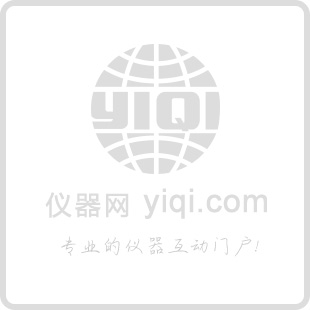FOCUS腮腺炎流感病毒快速检测试剂盒
广州健仑生物科技有限公司
(广州健仑生物科技有限公司是集研制开发、销售、服务于一体的高新技术企业,公司产品涉及临床快速诊断试剂、食品安全检测试剂,违禁品快速检测,动物疾病防疫检测试剂,免疫诊断试剂、临床血液学和体液学检验试剂、微生物检验试剂、分子生物学检验试剂、临床生化试剂、有机试剂等众多领域,同时核心代理Panbio、FOCUS、Qiagen、IBL、CORTEZ、Fuller、Inbios、BinaxNOW、LumuQuick、日本富士、日本生研等多家国际诊断产品集团公司产品,致力于为商检单位、疾病预防控制ZX、海关出入境检疫局、卫生防疫单位,缉毒系统,戒毒ZX,检验检疫单位、生化企业、科研院所、YL机构等机构与行业提供全方位、高品质的产品服务。此外,本公司还开展食品、卫生、环境、药品等多方面的第三方检测服务。)
广州健仑长期供应各种PCR试剂盒,主要代理进口和国产品Pai的流行病毒PCR检测试剂盒。例如:甲乙型流感病毒核酸检测试剂盒、黄热病毒核酸检测试剂盒、诺如病毒核酸检测试剂盒、登革病毒核酸检测试剂盒、基孔肯雅病毒核酸检测试剂盒、结核杆菌核酸病毒检测试剂盒、孢疹病毒核算检测试剂盒、西尼罗河病毒PCR检测试剂盒、呼吸道合胞病毒核酸检测试剂盒、冠状病毒PCR检测试剂盒等等。虫媒体染病系列、呼吸道病原体系列、发热伴出疹系列、消化道及食源感染系列。
产品规格:96T/盒
存储条件:4-8℃
我司同时还提供、美国FOCUS、西班牙DIA、美国trinity等知名品Pai试剂盒:
麻疹、风疹、甲流 、乙流、单疱疹1型、单疱疹2型、百日咳、百日咳毒素、腮腺炎、带状疱疹、单纯疱疹、HSV1型特异性、巨细胞-特异、风疹-特异、弓形虫-特异、棘球属、嗜肺军团菌、破伤风、蜱传脑炎、幽门螺旋杆菌、白色念珠菌、博氏疏螺旋体、细小病毒、钩端螺旋体、腺病毒、Q热柯克斯体、烟曲霉菌、埃可病毒、EB病毒、衣原体、耶尔森菌、空肠弯曲杆菌、炭疽杆菌、白喉、肠道病毒、柯萨奇病毒、肺炎衣原体、沙眼衣原体、土拉弗朗西斯菌、汉坦病毒、类风湿因子、呼吸道合胞病毒、单纯疱疹病毒质控品、巨细胞质控品、弓形虫质控品、风疹麻疹质控品、等试剂盒以。
欢迎咨询
欢迎咨询
FOCUS腮腺炎流感病毒快速检测试剂盒

我司还提供其它进口或国产试剂盒:登革热、疟疾、流感、A链球菌、合胞病毒、腮病毒、乙脑、寨卡、黄热病、基孔肯雅热、克锥虫病、违禁品滥用、肺炎球菌、军团菌、化妆品检测、食品安全检测等试剂盒以及日本生研细菌分型诊断血清、德国SiFin诊断血清、丹麦SSI诊断血清等产品。
欢迎咨询
欢迎咨询
想了解更多的产品及服务请扫描下方二维码:

【公司名称】 广州健仑生物科技有限公司
【市场部】 欧
【】
【腾讯 】
【公司地址】 广州清华科技园创新基地番禺石楼镇创启路63号二期2幢101-103室

这些细胞形状的多样性都是细胞形态与其功能相适应的结果。
一般讲来,植物细胞的体积很小,多数细胞的直径为10~100μm,肉眼难以辨别。有人认为:细胞体积的大小,主要受细胞核所能控制的范围的制约,体积小,则表面积大,有利于细胞与外界进行物质交换。但不同种类、不同部位的细胞大小差别悬殊。
分内在蛋白和外在蛋白两种。内在蛋白以疏水的部分直接与磷脂的疏水部分共价结合,两端带有极性,贯穿膜的内外;外在蛋白以非共价键结合在固有蛋白的外端上,或结合在磷脂分子的亲水头上。如载体、特异受体、酶、表面抗原。占20%~30%的表面蛋白质(外周蛋白质)以带电的氨基酸或基团——极性基团与膜两侧的脂质结合;占70%~80%的结合蛋白质(内在蛋白质)通过一个或几个疏水的α-螺旋(20~30个疏水氨基酸吸收而形成,每圈3.6个氨基酸残基,相当于膜厚度。相邻的α-螺旋以膜内、外两侧直链肽连接)即膜内疏水羟基与脂质分子结合。理论上,镶嵌在脂质层中的蛋白质是可以横向漂浮移位的,因而该是随机分布的;可实际存在着的有区域性的分布;(这可能与膜内侧的细胞骨架存在对某种蛋白质分子局限作用有关),以实现其特殊的功能:细胞与环境的物质、能量和信息交换等。(Frye和Edidin1970年用发红光的碱性芯香红标记人细胞同用发绿光荧光素标记膜蛋白抗体标记离体培养的小鼠细胞一起培养,然后使它们融合,从各自分布,经过37℃40min后变为均匀分布。光致漂白荧光恢复法,微区监测)
细胞膜上存在两类主要的转运蛋白,即:载体蛋白(carrier protein)和通道蛋白(channel protein)。载体蛋白又称做载体(carrier)、通透酶(permease)和转运器(transporter),能够与特定溶质结合,通过自身构象的变化,将与它结合的溶质转移到膜的另一侧,载体蛋白有的需要能量驱动,如:各类ATP驱动的离子泵;有的则不需要能量,以协助扩散的方式运输物质,如:缬氨酶素。通道蛋白与与所转运物质的结合较弱,它能形成亲水的通道,当通道打开时能允许特定的溶质通过,所有通道蛋白均以协助扩散的方式运输溶质。
The diversity of these cell shapes is the result of the adaptation of the cell morphology to its function.
In general, the volume of plant cells is very small, the majority of cells with a diameter of 10 ~ 100μm, the naked eye is difficult to distinguish. Some people think: the size of the cell volume, mainly controlled by the scope of the cell nucleus constraints, small size, the surface area is large, is conducive to cell exchange with the outside world. But different types, different parts of the cell size difference.
Divide the intrinsic protein and exogenous protein two kinds. The intrinsic protein is covalently bound directly to the hydrophobic portion of the phospholipid in a hydrophobic moiety and has polarities at both ends that penetrate both inside and outside the membrane; extrinsic proteins bind non-covalently to the outer ends of the native proteins or to phospholipid molecules Hydrophilic head. Such as carriers, specific receptors, enzymes, surface antigens. 20 to 30% of surface proteins (periplasmic proteins) are bound to lipids on both sides of the membrane with charged amino acids or group-polar groups; 70 to 80% of bound proteins (intrinsic proteins) Or several hydrophobic α-helices (20 to 30 hydrophobic amino acids, 3.6 amino acids per circle, equivalent to the membrane thickness. The adjacent α-helices are linked by linear peptide in the membrane and on the outside) That is, the hydrophobic hydroxyl in the membrane binds to lipid molecules. Theoretically, the proteins embedded in the lipid layer are laterally floating and displaceable, and thus they are randomly distributed; there may actually be a regional distribution (this may be related to the presence of a cytoskeleton on the inside of the membrane Protein molecular constraints related to), in order to achieve its special function: the cell and the environment of the material, energy and information exchange. (Frye and Edidin published in 1970 with the red light of the hand-held pediatric erythrocyte markers with the use of light-based labeling of digestive tract diarrhea, After 37 ℃ 40min into uniform distribution. Photobleaching fluorescence recovery method, micro-area monitoring)
There are two main types of transporters on the cell membrane: carrier protein and channel protein. Carrier proteins, also known as carriers, permease and transporters, are capable of binding to specific solutes and transferring the solute bound thereto to the other side of the membrane by a change in self-conformation, Some proteins need energy-driven, such as: all kinds of ATP-driven ion pump; while others do not need energy to facilitate the proliferation of transport substances, such as: valsamin. The channel protein binds weakly to the transported substance, it forms a hydrophilic channel that allows specific solutes to pass when the channel is open, and all channel proteins transport the solute in a manner that assists diffusion.
 FOCUS腮腺炎流感病毒快速检测试剂盒
FOCUS腮腺炎流感病毒快速检测试剂盒
 Elisa试剂盒之人腮腺炎病毒IgM Elisa试剂盒
Elisa试剂盒之人腮腺炎病毒IgM Elisa试剂盒
 Elisa试剂盒之人腮腺炎病毒IgG Elisa试剂盒
Elisa试剂盒之人腮腺炎病毒IgG Elisa试剂盒
 副流感病毒3 IgG试剂盒,副流感病毒3 IgG试剂盒价格,副流感病毒3 IgG试剂盒说明书,副流感病毒3 IgG试剂盒使用说明,副流感病毒试剂盒
副流感病毒3 IgG试剂盒,副流感病毒3 IgG试剂盒价格,副流感病毒3 IgG试剂盒说明书,副流感病毒3 IgG试剂盒使用说明,副流感病毒试剂盒
 副流感病毒2 IgG试剂盒,副流感病毒2 IgG试剂盒使用说明,副流感病毒2 IgG试剂盒价格,副流感病毒2 IgG试剂盒说明书,副流感病毒试剂盒
副流感病毒2 IgG试剂盒,副流感病毒2 IgG试剂盒使用说明,副流感病毒2 IgG试剂盒价格,副流感病毒2 IgG试剂盒说明书,副流感病毒试剂盒
 副流感病毒1 IgG试剂盒,副流感病毒1 IgG试剂盒说明书,副流感病毒1 IgG试剂盒使用说明,副流感病毒1 IgG试剂盒价格,副流感病毒试剂盒
副流感病毒1 IgG试剂盒,副流感病毒1 IgG试剂盒说明书,副流感病毒1 IgG试剂盒使用说明,副流感病毒1 IgG试剂盒价格,副流感病毒试剂盒
 猪流感病毒A(FLU A)ELISA试剂盒现货供应,猪流感病毒(FLU A)ELISA试剂盒价格
猪流感病毒A(FLU A)ELISA试剂盒现货供应,猪流感病毒(FLU A)ELISA试剂盒价格
 流感诊断试剂盒 日本生研副流感病毒Ⅳ型PCR荧光试剂盒
流感诊断试剂盒 日本生研副流感病毒Ⅳ型PCR荧光试剂盒
 Elisa试剂盒包邮,人抗副流感病毒IgG抗体(anti-PIV IgG )ELISA试剂盒 ,96孔Elisa试剂盒,48孔Elisa试剂盒
Elisa试剂盒包邮,人抗副流感病毒IgG抗体(anti-PIV IgG )ELISA试剂盒 ,96孔Elisa试剂盒,48孔Elisa试剂盒
 Elisa试剂盒包邮,人抗副流感病毒IgM抗体(anti-PIV IgM)ELISA试剂盒 ,96孔Elisa试剂盒,48孔Elisa试剂盒
Elisa试剂盒包邮,人抗副流感病毒IgM抗体(anti-PIV IgM)ELISA试剂盒 ,96孔Elisa试剂盒,48孔Elisa试剂盒
 流感快速检测试剂盒(Z好的流感筛查产品)
流感快速检测试剂盒(Z好的流感筛查产品)
 人FLU A ELISA试剂盒价格,北京人流感病毒A ELISA试剂盒现货
人FLU A ELISA试剂盒价格,北京人流感病毒A ELISA试剂盒现货